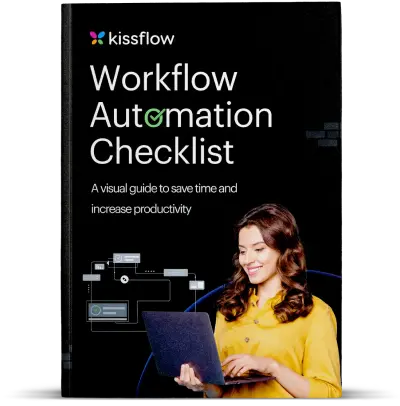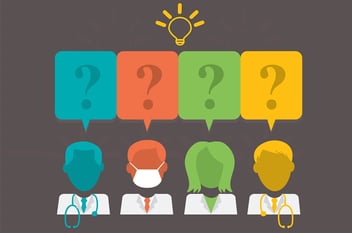
- >
- Workflow >
- How AI Workflow Automation Transforms Modern Healthcare
How AI Workflow Automation Transforms Modern Healthcare
Healthcare operates under constraints no other industry faces. Every delay can impact patient outcomes. Every error can have serious consequences. Every inefficiency consumes resources that could be directed to patient care. And every administrative burden takes clinicians away from the work that actually helps people.
AI healthcare automation and healthcare workflow automation aren't just making healthcare more efficient. They're fundamentally changing what's possible in patient care. AI hospital workflow systems are transforming operations from the emergency room to the billing department.
The administrative crisis is draining healthcare
The numbers tell a sobering story. 41 percent of healthcare professionals spend over 4 hours per day on administrative tasks like documentation. That's half the workday spent on paperwork instead of patients.
80 percent of hospitals now use AI to enhance patient care and workflow efficiency, not because it's trendy but because the alternative is unsustainable. The administrative burden is crushing healthcare systems, burning out clinicians, and creating delays that impact patient outcomes.
By 2027, clinicians are projected to reduce time spent on clinical documentation by 50 percent through generative AI technologies integrated into EHR workflows. That's not a minor improvement. That's the difference between a sustainable career and burnout.
The question isn't whether healthcare needs AI automation. It's whether we're implementing it fast enough.
Where AI automation saves time that saves lives
Time is the most precious resource in healthcare. AI workflow automation creates time by eliminating the administrative friction that consumes so much of it. These time-saving innovations are driving meaningful innovation in healthcare delivery.
Clinical documentation that writes itself
Documentation is essential. It's also time-consuming. Clinicians spend significant portions of each patient visit taking notes, entering data, and updating records instead of making eye contact and actually treating patients.
AI-powered ambient documentation systems listen to clinician-patient conversations, extract relevant clinical information, and generate draft notes automatically. The clinician reviews and approves, but the actual documentation work happens automatically.
The impact is substantial. Healthcare organizations implementing these systems report documentation time reductions by over 90 percent, giving clinicians back hours of time daily.
That time goes directly to patient care. More thorough examinations. Better patient education. Additional appointments in the same time window. The time savings compound into better outcomes.
Automated scheduling and resource optimization
Healthcare scheduling is complex. Appointment types require different time windows. Providers have varying expertise and availability. Rooms, equipment, and support staff must be coordinated. Emergencies require rapid re-optimization.
AI workflow automation handles this complexity automatically. It analyzes appointment needs, evaluates provider schedules and skills, optimizes room and equipment utilization, and predicts no-show probability to enable appropriate overbooking.
When an emergency or delay occurs, the system automatically re-optimizes, minimizing cascade effects. What would take scheduling staff hours to coordinate manually happens in seconds.
Intelligent patient triage and routing
Not all patient needs are equally urgent. Determining who needs to be seen immediately versus who can wait safely requires clinical judgment. But that judgment can be augmented by AI analyzing symptoms, medical history, and risk factors.
A mid-sized American hospital integrated an AI triage solution with its EHR system, and by correctly identifying high-risk patients, it allowed clinical staff to prioritize care and drastically cut down on wait times in emergency rooms.
The system doesn't replace clinical judgment. It enhances it by flagging high-risk cases immediately and ensuring appropriate routing.
The workflow automation that improves patient outcomes
Time savings matter, but the ultimate measure of healthcare automation is patient outcomes. AI workflows are demonstrating measurable impact.
Reducing errors through automated validation
Medical errors kill thousands of patients annually. Many of these errors occur in routine administrative processes. Wrong medication dosages. Missed drug interactions. Incorrect patient information. Documentation errors.
AI workflow automation catches these errors before they reach patients. Automated validation checks flag potential drug interactions, verify dosages against patient parameters, confirm patient identity at each step, and ensure documentation completeness.
The organizations implementing AI and RPA in revenue cycle management report that 18 percent cited fewer data-entry errors as the biggest improvement. In healthcare, fewer errors doesn't just mean efficiency. It means lives saved.
Accelerating diagnosis through workflow coordination
Diagnosis often requires coordinating information from multiple sources: lab results, imaging, patient history, specialist consultations. Delays in any of these components delay diagnosis and treatment.
AI workflows orchestrate these processes automatically. When a physician orders tests, the workflow coordinates lab scheduling, ensures appropriate equipment is available, routes results to interpreting specialists automatically, aggregates findings for the ordering physician, and flags concerning results for immediate attention.
What previously required numerous phone calls, emails, and manual follow-ups now happens automatically. Faster diagnosis means earlier treatment means better outcomes.
Enabling predictive intervention before crises occur
The most powerful healthcare workflows don't just respond to problems. They prevent them.
AI analyzes patient data continuously to identify deterioration patterns before they become critical. Remote monitoring workflows detect concerning trends and automatically alert care teams, enabling intervention before emergency room visits become necessary.
For chronic disease management, predictive workflows help providers intervene before conditions worsen, leading to improved long-term health outcomes. Prevention is always better than treatment, and AI workflows make prevention scalable.
The operational efficiency that creates capacity
Healthcare systems face chronic capacity constraints. Limited beds. Limited staff. Limited operating room time. AI automation creates capacity by using existing resources more efficiently.
Revenue cycle optimization
Healthcare billing is notoriously complex. Multiple insurance systems. Prior authorization requirements. Coding specifics. Claim denials and resubmissions. The manual effort is enormous.
46 percent of U.S. hospitals and health systems report using AI in their revenue cycle operations, and 74 percent of hospitals have implemented some form of revenue cycle automation.
Automated workflows handle claims submission, identify likely denials before submission, optimize coding for maximum legitimate reimbursement, and automatically resubmit corrected claims when needed.
Hospitals implementing these systems report ROI of $3.20 for every $1 spent, often within 14 months of implementation. That return isn't just financial. It's resources available for patient care instead of billing administration.
Supply chain and inventory management
Medical supplies must be available when needed but maintaining excessive inventory ties up capital. AI workflows optimize this balance by predicting usage based on scheduled procedures and historical patterns, automatically triggering reorders when inventory hits optimal reorder points, routing supplies efficiently across facilities, and flagging unusual consumption patterns that might indicate waste or errors.
This ensures supplies are available when patients need them while minimizing capital tied up in inventory.
Addressing the challenges of healthcare AI automation
The benefits are clear, but implementation isn't without challenges. Successful healthcare organizations address these systematically.
Integration with existing EHR systems
Healthcare IT ecosystems are complex. Multiple systems that weren't designed to work together must somehow share information seamlessly.
Effective AI workflows require robust integration layers that connect to EHR systems, lab systems, imaging systems, billing systems, and scheduling systems without requiring wholesale system replacements.
The Healthcare and Pharmaceuticals segment projected to compound at an 11.38 percent CAGR through 2030 reflects growing success in solving these integration challenges.
Maintaining clinician trust and oversight
72 percent of healthcare leaders say they trust AI to support non-clinical, administrative processes. Building that trust requires transparency, clear escalation paths for uncertain situations, and maintaining clinician control over clinical decisions.
AI should enhance clinical judgment, not replace it. Workflows must make it easy for clinicians to review, modify, or override AI recommendations.
Ensuring data privacy and security
Healthcare data is among the most sensitive. AI workflows must maintain HIPAA compliance, implement robust access controls, encrypt data throughout its lifecycle, and provide complete audit trails.
These aren't optional features. They're fundamental requirements for healthcare automation.
The transformation timeline
Healthcare AI automation is accelerating. 86 percent of healthcare organizations are using AI extensively right now, with 94 percent viewing AI as core to their operations.
By 2025-2026, AI agents will become essential in managing patient engagement, handling patient intake, appointment scheduling, symptom checking, and even mental health support.
The question for healthcare IT leaders isn't whether to implement AI workflow automation. It's how quickly you can do it responsibly.
Every day of delay means more administrative burden on clinicians, more capacity constraints limiting patient access, and more opportunities for errors that automation would prevent.
Building the healthcare workflow automation roadmap
Start where impact is highest and implementation risk is lowest:
1. Administrative workflows first: Scheduling, billing, supply chain. High volume, well-defined processes with clear success metrics.
2. Clinical support next: Documentation, test ordering and result routing, care coordination. Direct impact on clinician time and patient care.
3. Predictive and preventive last: Remote monitoring, intervention triggers, population health management. Highest potential impact, but requires robust data foundations.
Each successful implementation builds organizational capability and trust for the next. The healthcare systems seeing transformative results didn't get there overnight. They got there through systematic, measured implementation that proved value at each step.
How Kissflow supports healthcare workflow automation
Healthcare workflow automation platform requires flexibility to handle complex, variable processes while maintaining the governance and compliance healthcare demands.
Kissflow's low-code platform enables healthcare IT teams to rapidly design and deploy automated workflows that connect disparate systems, eliminate manual handoffs, and ensure information flows where it's needed when it's needed. Pre-built integrations and HIPAA-compliant infrastructure provide the foundation, while visual workflow design enables rapid adaptation as processes evolve.
From patient intake to discharge coordination, from billing to supply chain, Kissflow helps healthcare organizations automate the workflows that create time for what matters: patient care.
Transform your healthcare workflows to save time and lives.
Related Topics:

Kissflow's Complete Guide To Workflow Automation
Thank you for downloading the ebook!
Related Articles











